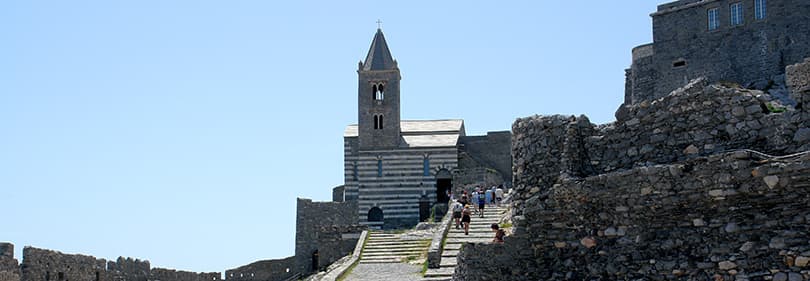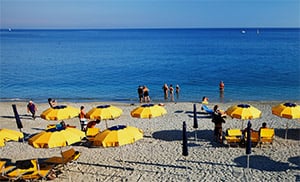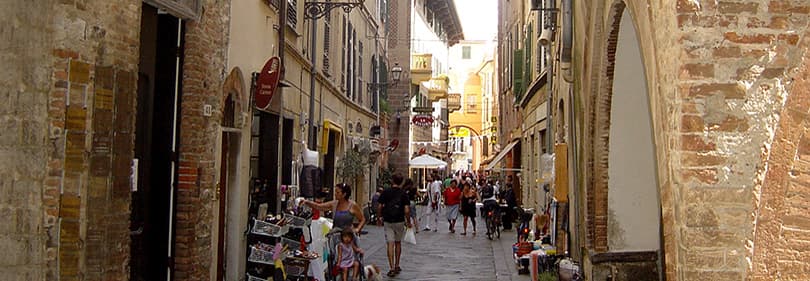
Historic sites
While visiting Liguria, there are many places that you most definitely should take the chance to see
For example, Genoa, the capital of Liguria, has a beautiful old town that is considered the best-preserved and largest one in Europe.
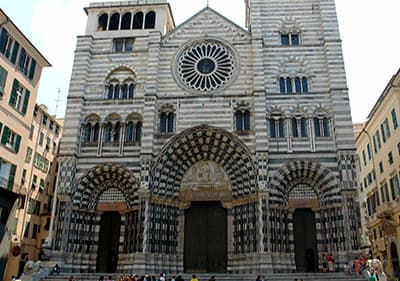
Visit the Historic sites in Genoa
The city also has many beautiful buildings that host many important art exhibitions, too, and the international cultural importance of Genoa was at its peak when it was designated as the European Culture Capital in 2004. Enjoy a walk through the typical narrow streets called “Caruggi” and visit the cathedral San Lorenzo. In the province of Genoa, the famous picturesque village of Portofino is definitely worth a visit, too.
Villa Grock – Imperia
This villa—originally called Villa Bianca—is named after the famous Swiss clown Grock (Charles Adrien Wettach), who built it in the 1920s and lived there at the end of his career until his death in 1959. You will certainly love the unique architecture of this villa. In this building, you can recognise many different architectural styles like Liberty, Baroque and Rococo, even if its structure is actually hard to define since it can be considered a portrait of the personality of the clown Grock: complex, extravagant, bizarre, playful and even a bit egocentric. It has a nice park with a little lake and a beautiful patio. In the park there is a great variety of vegetation and many different types of plants that Grock himself appreciated very much. The villa Grock is located above Imperia and you can enjoy a wonderful vantage point of Imperia-Oneglia from there.
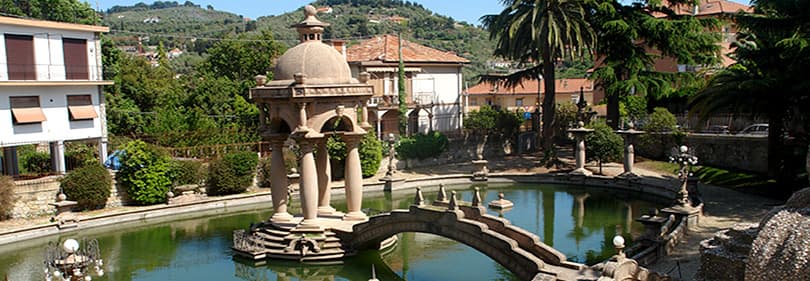
Old town and Doria castle - Dolceacqua
Dolceacqua is a lovely, little picturesque village in the Nervia valley in the hinterland of Bordighera. Quite simple, it is one of the most beautiful villages in Liguria. You will love the charming mediaeval and quiet atmosphere that you can breathe in from the air in Dolceacqua. Even the painter Claude Monet, while visiting Dolceacqua, was particularly impressed by the beauty of the little mediaeval bridge on the Nervia River that separates the two districts. The old town is characterised by narrow streets and high houses, each one close to another.
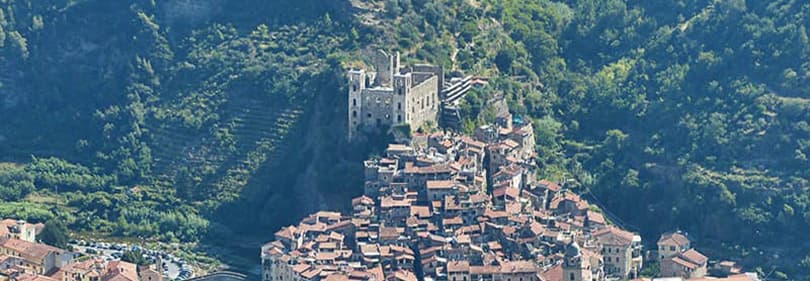
The ruins of Doria Castle are definitely worth seeing. The fortress was built in the 12th century by the counts of Ventimiglia. Over the centuries the structure of the castle was repeatedly modified. It was damaged during the War of the Austrian Succession in 1744. It was then abandoned by the Doria family—who were living there—and it was again damaged by an earthquake in 1887. Since 1942 the castle has been the property of the municipality of Dolceacqua.
Cervo
Cervo is a little picturesque village in the hinterland of Diano Marina. It is listed amongst the most beautiful villages in Italy. Walking through its narrow, uphill streets you will discover the cathedral, beautiful mediaeval houses, nice cafés and restaurants, as well as many artisan workshops.
Bussana Vecchia is a picturesque mediaeval village also known as the artists´ village. In the 19th century it was destroyed by a terrible earthquake and the inhabitants had to move a few kilometres downhill and found a new village called Bussana Nuova (new Bussana).
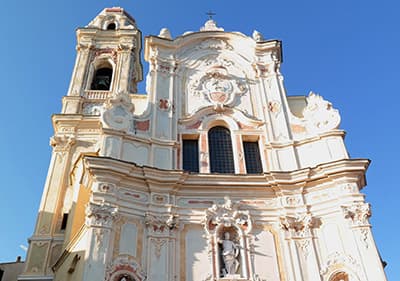
The old village was then abandoned until the 1950s when many Italian and European artists—the Community of International Artists—decided to move to Bussana Vecchia and helped restore the village. Now many artists from all over Europe still live there and you can find many nice artisan workshops.
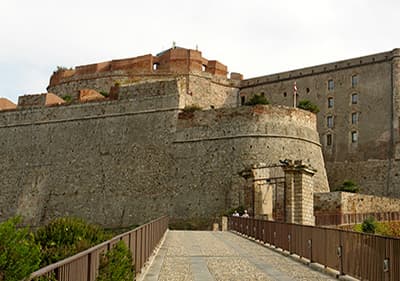
The fortress Priamar - Savona
It is considered one of the most important fortresses in the Mediterranean area. In the 19th century it was a prison, one of its most famous prisoners being Giuseppe Mazzini. At the end of the century, it was partially converted for industrial purposes. For the inhabitants of Savona, this fortress was still a witness to Genoese domination in the 15th and 16th centuries; for this reason the fortress remained disused and was even considered something that did not really belong to the city. In the 1980s it was restored and transformed. Nowadays, many cultural events take place there and the structure includes a congress centre, a museum and an open-air theatre.
Old town of Albenga
The old town is the heart of Albenga. Enjoy a nice walk in the little streets with nice little shops and cafés. It is divided into quarters and you can access it through one of the numerous town gates. In the central Piazza San Michele you can admire the Cathedral that bears the same name. The octagonal Battistero is one of the most beautiful paleochristian buildings that is still in perfect condition. It is situated in the heart of the old town of Albenga and is evidence of Albenga´s Roman past. Inside, you can see beautiful mosaics, graves and traces of paintings. Don´t miss the Museo Navale on the opposite side of the square! On the nice boulevard Viale Martiri della Libertà, you can walk under big trees, enjoy delicious ice cream or go shopping until you reach the Lungomare, the sea and the beaches.
Varigotti is a pretty town that is characterised by colourful houses (red, yellow and green) and narrow streets. In the low season, when the beaches are not crowded, Varigotti shows its best side and you can fully enjoy a romantic atmosphere at sundown from the hills above the town. Come and enjoy a spectacular view on Ligurian Riviera! The mediaeval castle is located on the hills and is definitely worth a visit, as is the mediaeval church, San Lorenzo.
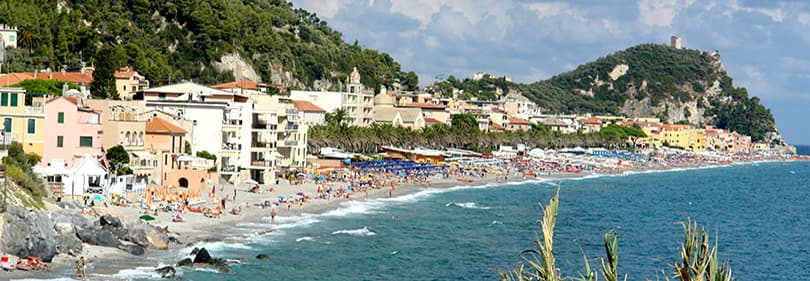
Old town and the San Lorenzo Cathedral – Genua
During your visit in Genoa you should not miss the old town. It is characterised by picturesque narrow streets. The heart of Genoa´s old town is the pedestrian cobblestone street, Via Garibaldi. Here you can admire beautiful buildings in the Renaissance and Baroque styles. These buildings were mansions for rich Genoese families. Now most of them are museums, like the so-called Palazzo Rosso and Palazzo Bianco, where you can get intimately acquainted with interesting collections of precious paintings and at the same time enjoy the wonderful frescoes and furnishings of those historic buildings.
The San Lorenzo cathedral is located in the square that bears the same name and was built between the 12th and the 14th centuries, so it reflects many different styles. On its beautiful facade there are Gothic elements, such as majestic portals. The facade itself is also coloured in black and white stripes, which is typical of Genoese architecture and was a symbol of nobility in the Middle Age. The two big lions at the side of the staircase were sculptured in 1840. Inside, you can admire beautiful sculptures and paintings as well as visit the fascinating museum with its collection of precious sacred objects.
Lanterna – Genoa
The Lanterna is the main lighthouse of the port of Genoa and the symbol of the city. It is one of the oldest standing structures of its kind in the world. It is 76 metres high and is located on the hill of San Benigno, not far from the district of Sampierdarena. The first tower was built in the first half of the 12th century and throughout the centuries it was often damaged and then restored. The Lanterna can be visited, and you can also visit the interesting museum near the tower that covers the history of navigation in Genoa, the city itself and its port. Address: Via alla Lanterna
![By Tassiano Daniele (Own work) [CC BY-SA 3.0 (http://creativecommons.org/licenses/by-sa/3.0)], via Wikimedia Commons](https://www.blumenriviera.co.uk/themes/blumen-riviera-theme/assets/homepage-2014/images/lanterna-genoa-ligurien.jpg)
Castello Brown – Portofino
The Castello Brown was a defensive fortress and a noble residence in the town of Portofino. It was built around the year 1000 in a strategic location in order to control the bay. In the following centuries it was repeatedly extended. In 1870, it was purchased by the English consul Sir Montague Yeats Brown and then restored. The town of Portofino has owned this piece of history since 1961 and has opened it to the public. The castle is surrounded by a wonderful garden full of Mediterranean flowers and plants.
Borgo Basilica dei Fieschi - San Salvatore di Cogorno
It is one of the most beautiful examples of Romanesque bichromatic architecture. The little picturesque town of San Salvatore di Cogorno is located in the Fontanabuona Valley and is one of the most characteristic villages of the West Ligurian Riviera. It is dated back to the 12th century and was built by Pope Innocenzo IV, a member of the Fieschi family. The Fieschi dominated all of the Fontanabuona area and part of the Aveto Valley in that period. The Basilica is a perfect setting for an unforgettable marriage.
Cristo degli Abissi - San Fruttuoso
The so-called “Christ of the Abyss” is a bronze statue of Jesus submerged in the waters of the San Fruttuoso Bay between Camogli and Portofino. It was placed there on the 22nd of August 1954 and was dedicated to Dario Gonzatti, the first Italian to use scuba gear, who died there in 1947. The sculpture was created by the Italian artist Guido Galletti and placed at approximately 15 metres depth.
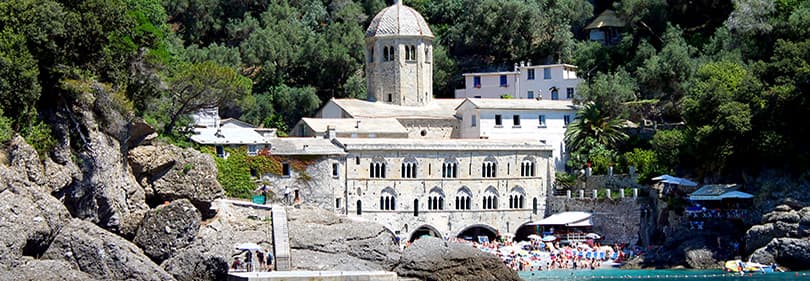
The statue was removed in 2003 to be restored and then replaced the following year. Many copies of the statue exist in the world and are located not only underwater but also in museums and churches. One of them is stored in the church of San Fruttuoso to be admired without having to dive in the bay waters.
The so-called Cinque Terre is made up of five picturesque villages in the province of La Spezia (Monterosso, Vernazza, Corniglia, Manarola and Riomaggiore). They are part of the national park that bears the same name, which is listed among the UNESCO World Heritage Sites. In this area, only a few roads are accessible by car. You can reach Cinque Terre by train or by ferry, from Genoa, Lerici or La Spezia. The five villages are connected by a walking trail known as Sentiero Azzurro (“Light Blue Trail”). The trail that connects Riomaggiore to Manarola is the most famous one and is called Via Dell'Amore (“Love Walk”).
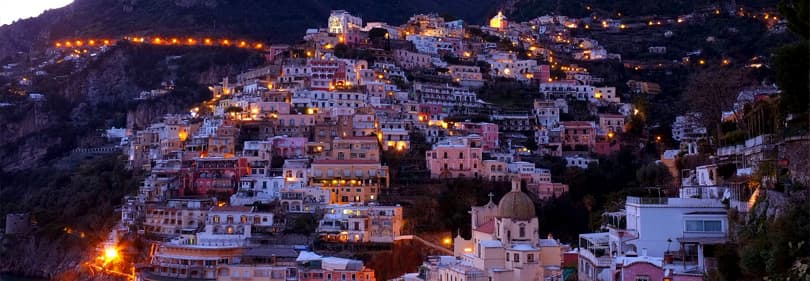
Castello di San Giorgio - La Spezia
This military fortress was built in the 13th century by Nicolò Fieschi, who modified an existing structure. Later it was destroyed during the wars between the families of Doria and Fieschi and then rebuilt and extended in the 14th century, as well as again in the 17th century. The planned restoration of the castle in the 20th century lasted more than a decade and was only concluded in 1998. Today it hosts the archaeological museum, “Ubaldo Formentini”.
Castello di Lerici - Lerici
It is considered one of the most beautiful fortresses in Liguria. It was built in 1152 and in the following years its structure was repeatedly modified by the Republics of Genoa and Pisa, the two parties contending for control over it because of its strategic location. The current structure of the castle is dated from 1555. During the 16th century, however, the castle gradually lost its importance. It currently hosts a palaeontology museum.
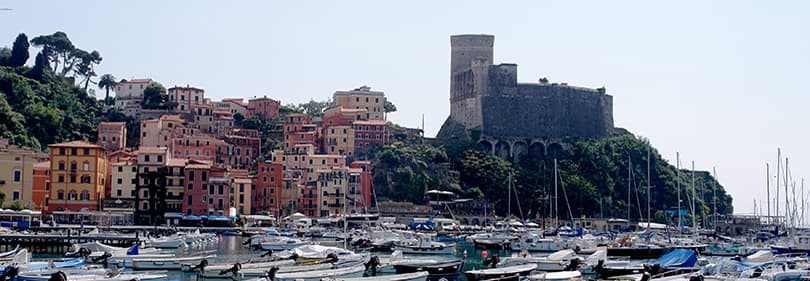
Old town - Tellaro
Tellaro is a picturesque fishing village reachable in just 10 minutes by bus from Lerici. It is listed amongst the most beautiful villages in Italy. Enjoy a nice walk through the picturesque narrow streets and discover beautiful sea views. In the tourist port area and the central little square you can find some bars and cafés where you have your pick of refreshing aperitifs. For a delicious dinner you can choose among the many nice restaurants in the old town. The facades of the houses have the typical Ligurian colours (light red/pink) and the pervading atmosphere of the village is very romantic; this is particularly true at sundown. Why not bring your loved one and enjoy some intimate time in this beautiful setting?
Castello di Portovenere - Portovenere
This castle, also known as Castello Doria, was probably built in the 12th century. It was contended by the Republics of Genoa and Pisa. During the 15th and 16th centuries, it was repeatedly extended and rebuilt; its current structure dates back to the 17th century. In the 1970s, it became the property of the municipalities of Portovenere and was restored. Today, it hosts various cultural events throughout the year.
